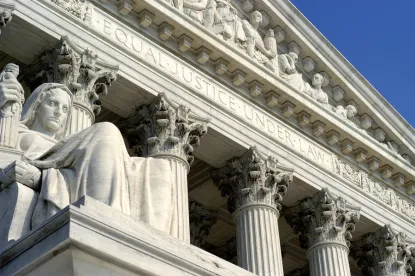The US Supreme Court issued a landmark opinion this morning that’s a huge win for LGBTQ advocates — and it’s well-timed, given that we’re right in the middle of Pride Month. The Supreme Court ruled that a federal law prohibiting gender discrimination protects workers from discrimination based on sexual orientation and gender identity.
By way of background, Title VII of the Civil Rights Act of 1964 makes it unlawful to discriminate against an employee “because of … sex.” Courts across the country have disagreed on whether this covers sexual orientation and gender identity, resulting in a patchwork of protection. As of this morning, though, that’s no longer the case. In a trio of cases, the Supreme Court ruled an employer who fires an individual merely for being gay or transgender violates Title VII. The starting point in all three cases was the same: an employer fired a longtime employee shortly after learning the employee is homosexual or transgender — and allegedly for no other reason than the employee’s sexual orientation or gender identity. Despite this commonality, given the split among this country’s courts, the outcomes were different. The Supreme Court has “at last” resolved the divergence among the courts over the scope of Title VII’s protections based on sexual orientation and gender identity.
The Supreme Court’s reasoning boils down to interplay between sex and an employee’s sexual orientation or gender identity, though it acknowledges these are distinct concepts from sex:
When an employer fires an employee because she is homosexual or transgender, two causal factors may be in play – both the individual’s sex and something else (the sex to which the individual is attracted or with which the individual identifies). But Title VII doesn’t care. If an employer would not have discharged an employee but for that individual’s sex, the statute’s causation standard is met, and liability may attach.
A quick hypothetical helps illustrate the Supreme Court’s reasoning. Bob is a male employee who is attracted to men. Barbara is a female employee who is also attracted to men. The employer finds out that Bob is gay and fires him, while Barbara remains employed. While the decision is based on Bob’s sexual orientation, it is necessarily tied to his sex because Barbara (a woman) also likes men and was not fired. The same analysis applies for gender identity.
So, what does this mean for employers? It may depend on the jurisdiction in which you operate and certainly varies based on the policies and procedures in place for each company. For those within the areas that were already covered by the patchwork of protection for LGBTQ employees, this opinion will likely have little impact on your policies and procedures. On the other hand, if you were not, this is a good opportunity to ensure decision-makers understand sexual orientation and gender identity are not factors in employment decisions (e.g., hiring, promotion, pay, discharge), and everyone knows discrimination and harassment on these bases are prohibited. Consider whether your employee handbook needs to be updated and whether it’s time for discrimination and harassment training for management and/or employees. While sexual orientation and gender identity bias fall within the ban of sex discrimination, the prudent move would be to explicitly include them in your list of protected characteristics, especially if you operate in a part of the country that did not previously recognize that Title VII prohibits discrimination on these bases.
Hopefully, your policies, procedures, and training already make clear that discrimination and harassment on the basis of sexual orientation and gender identity are unacceptable in your workplace. If not, consult with your employment attorney to get your practices up to date.




 />i
/>i

